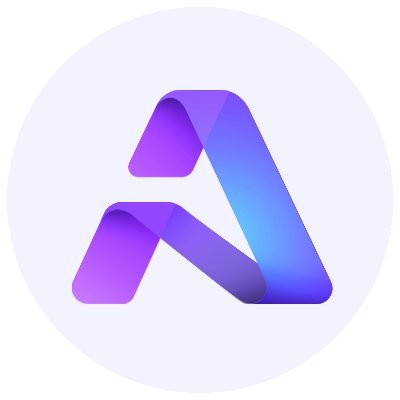Which node sales company is the most sincere? Data comparison of Aethir, Sopon, and CARV
Author: Ri Yue Xiao Chu
Source: Foresight News
First, let's understand node sales. Node sales are actually a new type of token sale method. It is a way that benefits multiple parties. For projects, a decentralized network itself requires a large number of nodes. For project teams, node sales have also become a new financing method. For retail investors, current projects are often launched with high valuations by institutions, making it difficult to find good profit opportunities in the secondary market. Participating in node sales means investing in the project before it is launched.
Overall, from the perspective of node token rewards, CARV is the most generous, with 25% of the total supply allocated to node rewards, which is the highest among the three, and it releases a total of 12.5% of tokens in the first year bull market, more than twice that of the other two projects.
In terms of sales, Sophon sold 30,000 ETH, and Aethir sold 40,000 ETH. CARV is about to start, and it is expected to perform well too. This can serve as a reference.
1. Project Introduction
Aethir is a decentralized computing power platform. Aethir aims to build a scalable, decentralized cloud infrastructure (DCI) that helps game and AI companies, regardless of size, deliver products directly to consumers, no matter where they are or what hardware they have. Aethir addresses the market fragmentation issue through decentralized cloud solutions.
Sophon is an entertainment-centric ecosystem built using zkSync's superchain technology as a modular aggregation. As a zkSync superchain utilizing the ZK Stack, Sophon aims to customize for any high-throughput applications (such as AI and gaming applications).
CARV aims to build the largest modular data layer, providing data services for GameFi and AI. It fundamentally changes the way data is used and shared by ensuring privacy, ownership, and control are firmly in the hands of individuals, paving the way for a future where data creates value for everyone. CARV already has 2.5 million registered users, 1.2 million monthly active users, and over 750 gaming and AI companies integrated into the CARV ecosystem.
2. Total Node Token Supply
- The total supply of CARV tokens is 1 billion, with 25% allocated for node rewards.
- The total supply of Aethir tokens is 42 billion, with 15% allocated for node rewards.
- The total supply of Sopon tokens has not been announced, with 20% allocated for node rewards.
- The total supply of Xai tokens is 2.5 billion, with 42.09% allocated for DAC and nodes.
Thus, Xai's 42.09% is for nodes and DAC, but the overall allocation for node rewards is also relatively high. Among the recent node sale projects, CARV has the highest total amount of tokens allocated for node rewards.

3. First Year Node Token Release
The release of node tokens in the first year is crucial. Because the following year is likely to be a bull market, the cost will be relatively good. After that, it may enter a bear market, and the token release will continue to accumulate, combined with institutions and teams starting to unlock, so it is normal for the price to drop by 10 times. Therefore, when it comes to node releases, the focus is on how many tokens can be mined within a year.
The 42.09% allocated by Xai consists of two parts. To calculate how much will be released specifically for nodes, we refer to the official node release chart. Xai's initial daily release is 1.712 million tokens, and when the circulating supply reaches 1.25 billion (officially expected to be around 5-6 months after TGE), the daily release will be 856,000 tokens. Based on calculations, Xai is expected to release approximately 440 million tokens in the first year, of which 85% is for node rewards, amounting to 374 million tokens, approximately 14.98% of the total supply.
CARV's node reward is 25%, but its token release is relatively fast. According to the official white paper, the first-year release of CARV tokens is 50% of the total, which is 12.5% of the total supply. This is basically the same as Xai.
Aethir's release rules are not clearly defined, only stating that there is a 4-year release period. The node reward is only 15% of the total supply, and it is expected to be around 5%-7% in the first year. The fundamental reason is that Aethir has reserved a large portion of the rewards for computing power providers for mining.
Sopon's node rewards have a three-year linear release, with 27.78% released in the first year, which is 5.56% of the total supply.
For node token rewards, CARV's first-year release of 12.5% is the highest among the three projects. In contrast, Aethir and Sopon only allocate 5% of the total supply to nodes, which is relatively low.
4. Node Token Redemption Period
After nodes mine tokens, they do not receive the tokens immediately but instead receive esXai, vATH, and veCARV. There is a certain redemption period to convert them into tradable tokens.
For Xai, converting esXai to Xai requires waiting 180 days, with two options: if converted in 15 days, only 25% of Xai can be obtained. In 90 days, 62.5% of Xai can be obtained.
Aethir's rule is as follows: redeeming within 30 days only allows for 25%, with a default redemption period of 180 days.
For CARV, converting veCARV to CARV requires waiting 150 days, with the same two options: if converted in 15 days, only 25% of Xai can be obtained. In 90 days, 60% of CARV can be obtained.
Sopon's node release has not been announced.
Overall, all three projects have relatively long redemption periods, and they are quite similar. If we were to differentiate, CARV has a slight advantage with its 150-day redemption period, which is one month shorter than Xai and Aethir's 180 days.
5. Other Token Unlocking in the First Year
In addition to node rewards, we also need to consider other token unlocks. Because the release of other tokens will increase the inflation rate.
In token distribution, apart from the node mining portion, it is often divided into three parts: one part is for project needs, such as market making, operational activities, etc. This part is often released in large quantities at TGE, so it does not require much attention. The second part is for ecological rewards, community, foundation, etc. This part often requires DAO voting for long-term project development. The third part is for the release of institutions and teams. This part needs special consideration.
In this regard, Xai appears to be less friendly. Teams and institutions start unlocking 6 months after TGE, releasing about 1.5% of the total token supply each month. The node reward tokens are open for redemption about 2 months after TGE, plus a 6-month redemption period. This means that teams and institutions have a large amount of tokens circulating in the market before the nodes.
CARV's investors start unlocking 6 months after TGE, while the team starts unlocking 9 months after TGE. The unlocking conditions are better than Xai, and it is important to note that CARV's node mining token redemption period is 5 months, so node tokens are unlocked before investor tokens.
Aethir and Sopon have a 12-month lock-up period for institutional and team tokens. However, in Aethir's token model, 35% of the total supply is for GPUs, which releases in sync with nodes, meaning there are twice as many tokens unlocking together with the nodes.
6. Node Sales Situation


In node sales, Xai has sold 35,155 nodes, with a sales amount of 13,080 ETH, valued at 40 million USD, and the average cost per node is 0.372 ETH. The node price has risen from a low of 0.133 ETH to 1.43 ETH, an increase of over 10 times.
Aethir has sold 74,040 nodes, with a sales amount of 41,627 ETH, valued at 130 million USD. The average cost per node is 0.56 ETH. The node price has risen from a low of 0.1259 ETH to 1.8232 ETH, which has increased by 14 times.
Sophon has sold 121,261 nodes, with a sales amount of 31,087 ETH, valued at 96 million USD. The average cost per node is 0.256 ETH.
Regarding node sales, Xai can be said to be the beginning of this round, as most node sale projects are learning from Xai. However, Xai's own data is not very good because the market conditions were not very hot when Xai was sold. Additionally, since Xai was the first time, many people had concerns about this format. Moreover, many who participated in the GALA node in 2021 have yet to break even. However, after Xai was listed on Binance, early participants in the nodes gained substantial profits, bringing many users to later node sale projects.
Aethir's node sales benefit not only from Xai's profit effect but also from being at the peak of AI sector hype. As for other quality projects, the possible outcomes may lie between Xai and Aethir.
7. Conclusion
From the project perspective, Aethir, Sopon, and CARV are not in the same track and cannot be directly compared. However, each has its advantages: Aethir belongs to the AI track and has scarce GPU computing power, which is currently the hottest sector. Sopon's project seems more like a quick assembly during a good market. However, it has the original creators of zkSync involved, giving it significant recognition and resources within the community. CARV has accumulated over the years, growing rapidly and possessing a vast user base and ecosystem projects.
From the perspective of node sales, CARV is the most generous, with 25% of the total supply allocated to node rewards, which is the highest among the three, and it releases a total of 12.5% of tokens in the first year bull market, more than twice that of the other two projects.
In terms of sales, Sophon sold 30,000 ETH, and Aethir sold 40,000 ETH. CARV is about to start, and it is expected to perform well too. This can serve as a reference.













